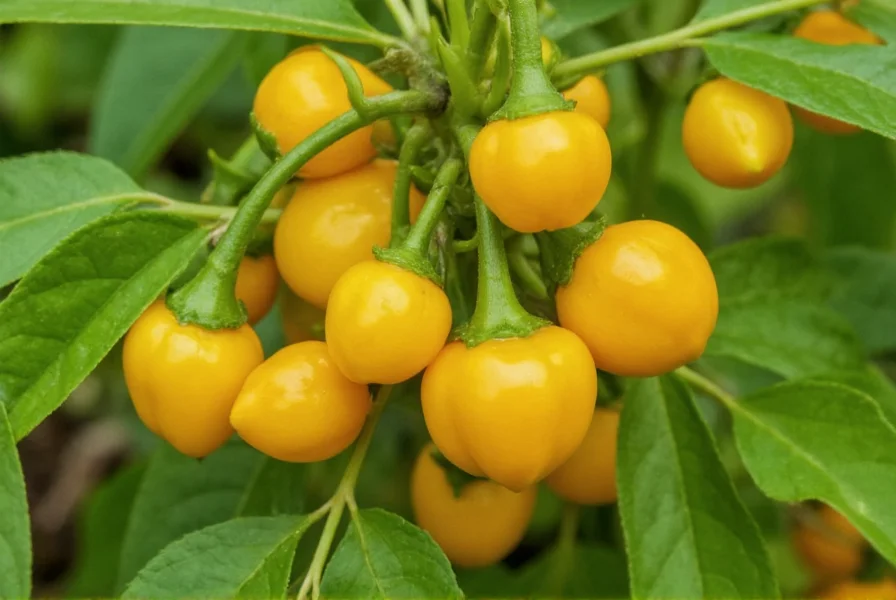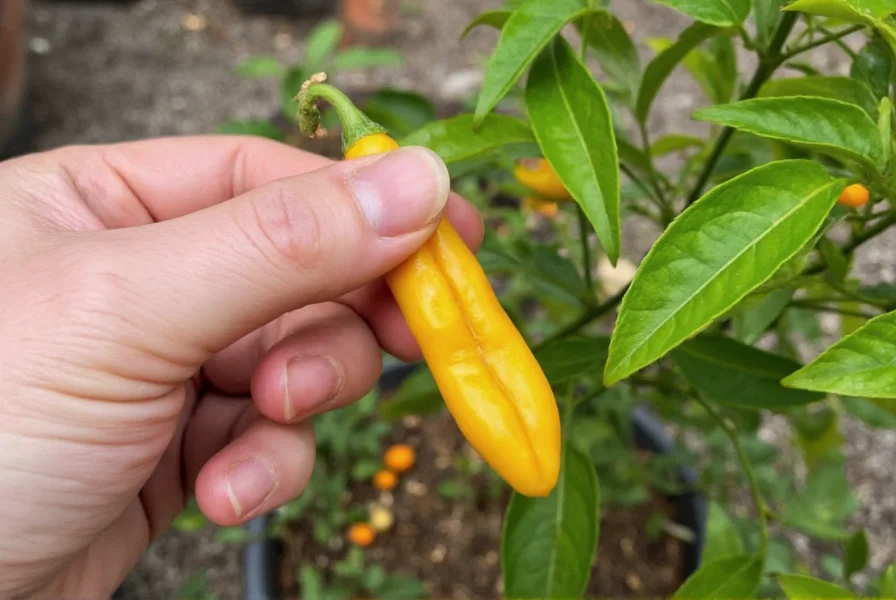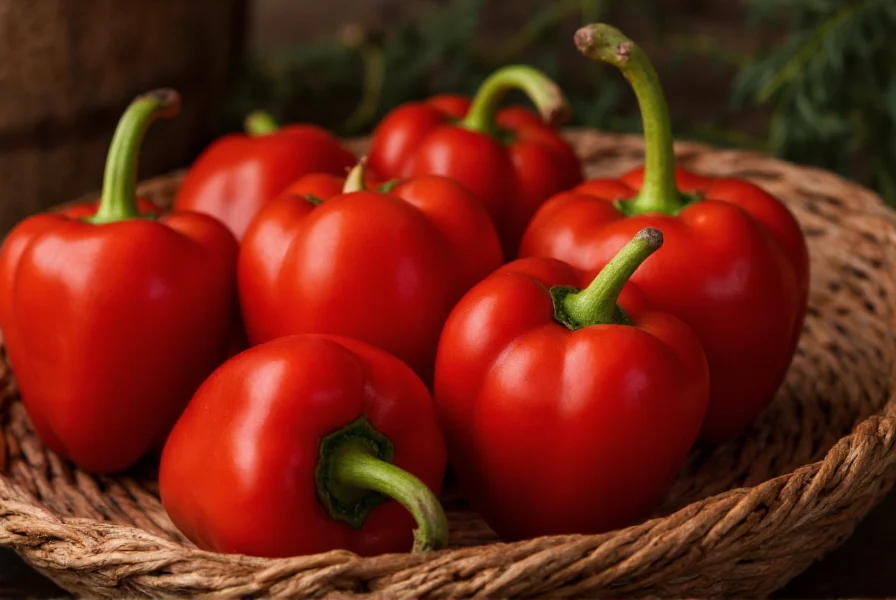These tiny but mighty peppers have gained international attention among culinary enthusiasts and professional chefs for their distinctive flavor profile that combines moderate heat with bright citrus notes. Unlike many commercially available peppers, charapitas remain relatively rare outside their native regions due to specific growing requirements and delicate nature.
Understanding Charapita Pepper Characteristics
Charapita peppers stand out among chili varieties for several distinctive physical and flavor characteristics. These miniature peppers typically measure just 1-2 centimeters in diameter—about the size of a large pea—and grow in clusters on relatively small plants. When fully ripe, they display a vibrant golden-yellow color that makes them visually distinctive among chili varieties.
Their heat level places them in the moderate category on the Scoville scale, registering between 30,000-50,000 units. This makes them significantly hotter than jalapeños (2,500-8,000 SHU) but milder than habaneros (100,000-350,000 SHU). What truly distinguishes charapitas, however, is their complex flavor profile that features pronounced citrus notes—particularly lemon and lime—with subtle tropical fruit undertones.
| Pepper Characteristic | Charapita Pepper Details | Comparison to Common Peppers |
|---|---|---|
| Size | 1-2 cm diameter (pea-sized) | Smaller than cherry peppers |
| Heat Level | 30,000-50,000 Scoville units | Hotter than serranos, milder than habaneros |
| Flavor Profile | Citrus-forward with tropical notes | More complex than standard yellow peppers |
| Color When Ripe | Bright golden-yellow | Distinct from red or green chili varieties |
| Growth Habit | Small bushy plants, clustered fruit | Different from elongated pepper varieties |
Origin and Historical Significance
Charapita peppers originate from the Amazon basin regions of Peru and Bolivia, where they've been cultivated by indigenous communities for centuries. The name "charapita" comes from the Quechua language, reflecting their deep cultural roots in the Andean region. Traditional cultivation methods have been passed down through generations, with specific knowledge about optimal growing conditions and harvesting techniques.
Unlike many commercially dominant pepper varieties that have been selectively bred for mass production, charapitas have remained relatively unchanged in their native habitats. This preservation of traditional varieties contributes to their unique flavor characteristics that haven't been compromised by commercial breeding for shelf life or uniform appearance.
For many years, charapita peppers remained largely unknown outside their native regions due to their delicate nature and specific growing requirements. Their recent rise in popularity among gourmet chefs worldwide has created both opportunities and challenges for traditional growers, though sustainable cultivation practices remain essential to preserving this unique variety.

Culinary Applications and Flavor Pairings
The distinctive flavor profile of charapita peppers makes them particularly valuable in culinary applications where a balance of heat and bright citrus notes is desired. Professional chefs prize them for their ability to add complexity to dishes without overwhelming other ingredients—a quality that sets them apart from many hotter chili varieties.
When incorporating charapita peppers into cooking, consider these effective applications:
- Raw preparations: Finely diced in salsas, ceviche, or fresh salads where their citrus notes can shine without cooking
- Sauces and dressings: Blended into vinaigrettes, aiolis, or creamy sauces for subtle heat and flavor complexity
- Infused oils: Steeped in high-quality olive oil to capture their distinctive flavor for finishing dishes
- Seafood pairings: Particularly complementary with fish and shellfish, enhancing without dominating delicate flavors
- Dessert applications: Used sparingly in fruit-based desserts or chocolate preparations for unexpected complexity
When working with charapita peppers, remember that their small size means seeds and membranes constitute a larger proportion of the pepper compared to larger varieties. For milder applications, carefully remove seeds and white membranes. The thin skin requires gentle handling to prevent bruising, which can affect both appearance and flavor.
Growing Charapita Peppers Successfully
Cultivating charapita peppers presents unique challenges that explain their relative rarity in commercial agriculture. These peppers require specific conditions that differ from more common chili varieties, making them somewhat challenging for home gardeners but not impossible with proper care.
Successful charapita cultivation requires attention to these key factors:
- Tropical climate requirements: They thrive in warm, humid conditions similar to their native Amazon environment, with temperatures between 75-85°F (24-29°C)
- Soil conditions: Well-draining, slightly acidic soil rich in organic matter mimics their natural growing environment
- Water needs: Consistent moisture without waterlogging, as their delicate root system is susceptible to rot
- Light requirements: Full sun for at least 6-8 hours daily, though some afternoon shade can be beneficial in extremely hot climates
- Growing season: Longer than many common peppers, typically requiring 90-120 days from transplant to harvest
For gardeners outside tropical regions, growing charapitas in containers allows better control of their environment. Start seeds indoors 8-10 weeks before the last frost date, using a seedling heat mat to maintain optimal germination temperatures. The plants typically reach 18-24 inches in height and benefit from staking as they mature and bear fruit.

Substitutes and Comparisons to Similar Peppers
When charapita peppers aren't available—which is common outside specialty markets or home cultivation—several alternatives can approximate their flavor profile, though none perfectly replicate their unique combination of heat and citrus notes.
The closest substitutes include:
- Aji amarillo: Offers similar citrus notes but with larger size and slightly different heat profile (30,000-50,000 SHU)
- Thai bird's eye chili with lemon zest: Provides comparable heat with added citrus element, though flavor profile differs
- Orange habanero with reduced quantity: Use sparingly to approximate heat level while capturing some tropical notes
- Pequin peppers: Similar small size and heat level (40,000-60,000 SHU) with some citrus notes, though more earthy
Understanding the differences between charapita peppers and similar varieties helps in making appropriate substitutions. While aji amarillo shares some flavor characteristics, it grows in larger pods and has a slightly different heat distribution. Pequin peppers offer similar size and heat but lack the distinctive citrus-forward profile that makes charapitas special.
Storage and Preservation Techniques
Due to their delicate nature and limited availability, proper storage of charapita peppers maximizes their shelf life and preserves their distinctive flavor. Fresh charapitas typically last 5-7 days in the refrigerator when stored properly in a perforated plastic bag with a paper towel to absorb excess moisture.
For longer-term preservation, consider these effective methods:
- Freezing: Flash freeze whole peppers on a baking sheet before transferring to airtight containers (best for cooking applications)
- Drying: Use a food dehydrator at low temperature (95°F/35°C) to preserve flavor without excessive heat damage
- Infused vinegars: Create flavorful vinegars that capture the citrus notes while preserving the heat
- Oil preservation: Store in high-quality olive oil with garlic and herbs for versatile finishing oil
Dried charapita peppers can be ground into a distinctive powder that retains much of their citrus character, unlike many dried chilies that develop more earthy notes. When reconstituting dried peppers, a brief soak in warm citrus juice rather than water helps restore some of their characteristic flavor profile.











 浙公网安备
33010002000092号
浙公网安备
33010002000092号 浙B2-20120091-4
浙B2-20120091-4